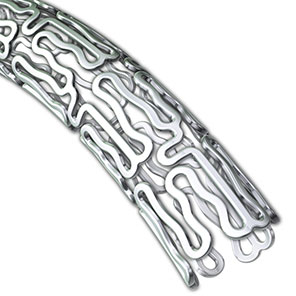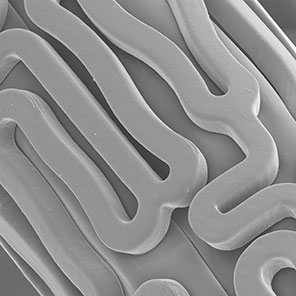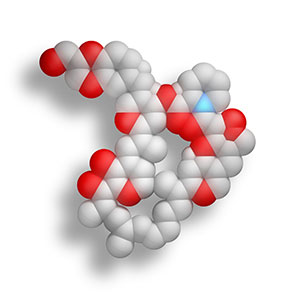Innovative Stent Design
XIENCE™ Stent is not like other DES—it is the DES proven to provide uncompromising clinical results during and far beyond the intervention, not only helping interventional cardiologists (ICs) achieve enduring and positive patient outcomes, but also enabling patients to experience improved quality of life.¹
XIENCE™ Stent is uniquely designed for exceptional performance1
XIENCE™ Stent is designed to deliver uncompromising clinical success based on a unique combination of stent design, fluoropolymer and drug.
Innovative Stent Design
- Flexible stent and delivery system offers conformability to vessel anatomy2
- Low metal-to-artery ratio reduces injury and/or inflammation3
- Thin, well-apposable struts for rapid re-endothelialization, healing and reduced thrombogenicity4

Anti-Thrombotic Fluoropolymer
The XIENCE™ Stent is significantly more anti-thrombotic than other DES5 due to:
- Less platelet adhesion
- Less inflammation
- Coating that is durable and flexible

Market-Leading Everolimus3
- 20,000,000 implants worldwide7
- Most studied and used DES7
- Elution rate or everolimus matches restenosis cascade8,9
- Low drug dose8,9
- Broad therapeutic range8

Just as the stent design is critical to patient outcomes and quality of life, so are the polymer coatings and the drug elution profile.
References
- Zanchin C, et al. JACC Cardiovasc Interv. 2019;12(17):1665-1675. Serruys P, et al. N Engl J Med. 2010;363:136-146. Shiomi H, et al. JACC Cardiovasc Interv. 2019;12:637-647. Kufner S, et al. Circulation. 2019:139(3):325-333. Palmerini T, et al. Lancet. 2013;379:1393-1402. Bangalore S, et al. Circulation. 2012;125:2873-2891. Bangalore S, et al. Circ Cardiovasc Interv. 2013;6(6):378-390. Pilgrim T, et al. Lancet. 2014;384:2111-2122. Pilgrim T, et al. Lancet. 2018;392:737-746. Baron S, et al. J Am Coll Cardiol. 2017;70:3113-3122. Data on file at Abbott.
- Colombo A, et al. J Am Coll Cardiol. 2002;40:1021-1033.
- Data on file at Abbott. 20,000,000 implants number is based on data of DES implants through Q4 2022.
- Kolandaivelu K, et al. Circulation. 2011;123;1400-1409. Kastrati A, et al. Circulation. 2001;103;2816-2821.
- Jinnouchi H, et al. J Am Coll Cardiol. 2019;74(Suppl B): TCT-291.
- Perkins LEL, et al. J Interven Cardiol. 2009;22:S28-S40.
- Ding N, et al. J Interv Cardiol. 2009;22:S18-S27.
MAT-2010598 v2.0
